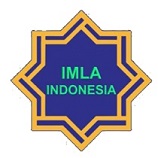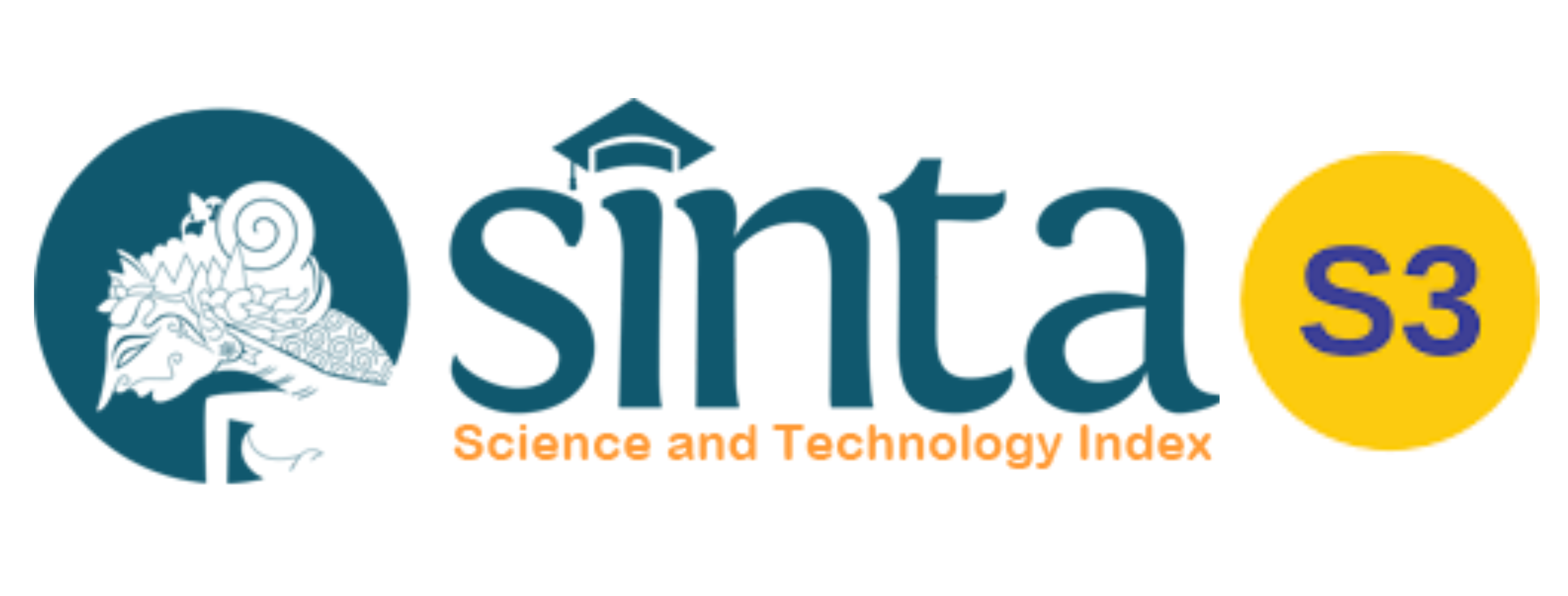HOPE AND LOVE IN THE POEM ILĀ BAIRŪT AL-UNṠĀ MA‘A AL-I‘TIŻĀR BY NIZĀR QABBĀNĪ: A STUDY OF ROLAND BARTHES' SEMIOTICS
Abstract
Every literary work reflects the author’s hopes and goals, conveyed through a particular point of view intended to influence the reader, resulting in various interpretations. This study aims to explore the meanings of love and hope in the poem Ilā Bairūt al-Unṡā Ma‘ al-I‘tiżār by Nizār Qabbānī. The focus is: 1) What are the denotative, connotative, and mythical meanings in the poem? 2) How are the poet’s love and hope represented? This research uses a qualitative descriptive method with Roland Barthes’ semiotic approach. Data collection techniques include literature review and internet research. The results show: 1) Thirty-five denotative words and sentences were identified, each carrying connotative meanings; the mythical meaning emphasizes nationalism, patriotism, unity, and responsibility to prevent national destruction. 2) The representation of love includes: attention, shown through admiration for Lebanon’s natural and cultural beauty; responsibility, through awareness of Lebanon’s condition and rejection of its destruction; respect, by valuing Lebanon’s charm and contributions; and understanding, recognizing Beirut as a unique and irreplaceable city that needs love and care. The poet hopes readers will acknowledge Lebanon’s role and foster awareness, responsibility, and unity to improve the nation.
Keywords
Full Text:
PDFReferences
Aart, V. Z. (1993). Semiotika: Tentang Tanda, Cara Kerjanya, dan Apa yang Kita Lakukan Dengannya. Yayasan Sumber Agung.
Abu, A. K. (1989). Lebanona country study (T. Collelo (ed.); 3rd ed.). United States Government as represented by the Secretary of the Army.
Ade, H., and Puspitasari, N. A. (2017). Kajian Puisi. FKIP UHAMKA.
Aimi, R. (2023). Al-Maksah Fi Qashidah ’Anufu Hubbi ‘Isytuhu Li Nizar Qabbani (Dirāsah Simiyaiyah) [UIN Ar-Raniry Banda Aceh]. https://repository.ar-raniry.ac.id/id/eprint/25553
Alex Sobur. (2006). Semiotika Komunikasi, Analisis Teks Media Suatu Pengantar Untuk Analisa Wacana, dan Analisis Framing. PT Remaja Rosdakarya.
Ambarini, N. M. U. (2010). Semiotika Teori dan Aplikasi Pada Karya Sastra. UPGRIS PRESS.
Arisza, Y. N. & Kasnadi, H. H. (2021). Gaya Bahasa Retoris Dalam Kumpulan Cerpen Metafora Padma Karya Bernard Batubara. Jurnal LEKSIS, 01, 78.
Barthes, R. (1968). Elements of semiology. Hill and Wang.
Barthes, R. (1974). S/Z. Basil Blackwell Ltd.
Carla, K. R. E.-H. (2012). Terrestrial Biodiversity In Lebanon. National Centre for Remote Sensing, National Council for Scientific Research.
Dipoyodo, K. (1977). Timur Tengah Dalam Pergolakan. Yayasan Proklamasi Centre for Strategic and Internasional Studies.
Ensiklopedia Dunia: Lebanon. (n.d.). Universitas STEKOM. https://p2k.stekom.ac.id/ensiklopedia/Lebanon
Farisi, R. A. and M. Z. Al. (2023). Konsep Makna Mau’izah dalam Al-Qur’an: Implementasi Teori Semiotika Roland Barthes Terhadap Qs. An-Nahl Ayat 125. Rayah Al-Islam, 7(2), 690.
Faruk. (2017). Metode Penelitian Sastra Sebuah Penjelajahan Awal. Pustaka Pelajar.
Habib, G. (2013). Geografi Regional Lebanon. https://habib-geo.blogspot.com/2013/03/geografi-regional-libanon.html?m=1
Hafidz, M. A. (2018). Pemikiran Roland Barthes Tentang Mitos Studi Kasus Sumpah Pati di Desa Kedondong Kec. Tulangan Kab. Sidoarjo. Universitas Islam Negeri Sunan Ampel.
Humphreys, D. (2015). The Reconstruction of the Beirut Central District. Spaces and Flows: an International Journal of Urban and Extraurban Studies, 6(4), 2.
Ibrahim, A. I. (1998). al-Qamus al-jami’ lil Muthalahat al-Fiqhiyah. Dar ar-Rasul al-Akram.
Ma’luf, L. (2000). al-Munjid fil Lughah al-Arabiyah al-Mu’ashirah. Dar al-Mashreq.
Makawi, D. (2020). Nansi ’Ajram Taṭrihu Aghniyah Ila beirut al-Untsa ma’a al-I’tidzār li Nizar Qabbani. Al-Yaum “s-Sābi.” https://www.youm7.com/story/2020/10/8/نانسي-عجرم-تطرح-أغنية-إلى-بيروت-الأنثى-مع-الاعتذار-لنزار/5012704
Manzur, I. (2008). Lisan al-Arab. Dar al-Fikr.
Maulana, I. A. (2021). Representasi Semiotika Roland Barthes Dalam Syair “Ahinnu Ila Khubzi Ummi” Karya Mahmoud Darwish. An-Nahdah Al-’Arabiyah, 1(2), 70–84. https://doi.org/10.22373/nahdah.v1i2.1232
Musthafa, I., Najar, M. A., & Ziyat, A. H. (1989). al-Mu’jam al-Wasith. Dar al-Da’wah.
Musyifiqur, R. (2021). Tanah Yang Terjajah (Puisi-Puisi Politik Nizar Qabbani). Diva Press.
Nur, F. (2017). Sajak Cinta dan Perjuangan dari Tanah Suriah. Medium. https://medium.com/@mfaisalni/sajak-cinta-dan-perjuangan-dari-tanah-suriah-294e9e06a95e
Nyoman, K. R. (2007). Sastra dan Kultural Studies (2nd ed.). Pustaka Pelajar.
Okke, Z. (2008). Semiotika Dan Penerapannya dalam Karya Sastra. Pusat Bahasa Departemen Pendidikan Nasional.
Rohmah, L. (2020). Pengandaian Tokoh “Aku” dalam Puisi Lau Annanaa Lam Naftariq Karya Faruq Juwaidah (Analisis Semiotika Roland Barthes) / Supposition of “I” Figures in the Poetry “Lau Annanaa Lam Naftariq” by Faruq Juwaidah (Semiotic Analysis of Roland Barthes). Diwan : Jurnal Bahasa Dan Sastra Arab, 6(2), 182. https://doi.org/10.24252/diwan.v6i2.14440
Qabbani, N. (2008). Ilā Bairūt al-Unṡa ma’a al-Hubb. Mansyurat Nizar Qabbani.
Sahidin, R. (2014). Peran Hizbullah Dalam Pemerintahan Di Lebanon (1992-1997). Universitas Syarif Hidayatullah.
Swasono, R. B. (2010). Pengaruh Konflik Internal Tahun 1975-1990 Terhadap Sistem konfensionalisme Dalam pemerintahan lebanon. Universitas Indonesia.
Teeuw, A. (1988). Sastra dan Ilmu Sastra: Pengantar Teori Sastra. Pustaka Jaya.
Traboulsi, F. (2012). A History of Modern Lebanon (2 (Ed.)). Pluto Press.
DOI: https://doi.org/10.20961/cmes.18.1.94668
Refbacks
- There are currently no refbacks.
Copyright (c) 2025 Center of Middle Eastern Studies (CMES)

This work is licensed under a Creative Commons Attribution-ShareAlike 4.0 International License.
| Copyright of CMES ISSN 2085-563X (print) and ISSN 2502-1044 (online) CMES Journal is licensed under a Creative Commons Attribution-ShareAlike 4.0 International License. | CMES (Center of Middle Eastern Studies) Print ISSN: 2085-563X Online ISSN: 2502-1044 Website: https://jurnal.uns.ac.id/cmes/index Email: cmes@mail.uns.ac.id Published by: Universitas Sebelas Maret Office: Department of Arabic Literature, Faculty of Cultural Science, Universitas Sebelas Maret Ir. Sutami Street, No. 36A, Surakarta, Jawa Tengah 57126 Phone: +62 822-4000-2313 |















